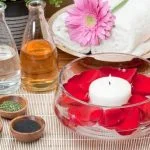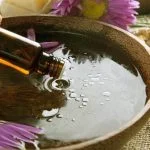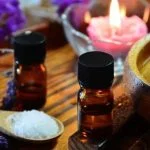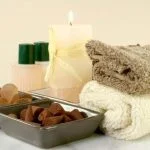Are you curious about how to make aromatherapy body oil? Aromatherapy has been known for its therapeutic benefits, and when combined with body oils, it can create a truly indulgent experience. In this article, we will explore the world of aromatherapy body oils and how they can enhance your well-being. From understanding essential oils to crafting your own unique blend, we will guide you through the process of creating your own personalized aromatherapy body oil.
Aromatherapy is the practice of using natural plant extracts to promote health and well-being. When these aromatic compounds are infused into body oils, they can provide a range of benefits such as relaxation, stress relief, and even energy enhancement. In this section, we will delve into the various benefits of aromatherapy and how the use of body oils can elevate the experience.
Understanding essential oils is crucial when delving into the world of aromatherapy body oil. Each essential oil carries its own unique properties and benefits. We will educate you on the different types of essential oils available and how they can be used in combination to create personalized blends for your specific needs. By gaining knowledge on essential oils, you’ll be better equipped to craft effective and enjoyable aromatherapy body oil recipes for yourself.
Understanding Essential Oils
When it comes to making your own aromatherapy body oil, understanding essential oils is crucial. Essential oils are highly concentrated plant extracts that have been used for centuries to promote health and well-being. Each essential oil has its own unique properties and can provide different therapeutic benefits. Some common essential oils used in aromatherapy body oil include lavender for relaxation, peppermint for energy, and eucalyptus for stress relief.
Here are some popular essential oils and their individual properties:
- Lavender: Known for its calming and soothing properties, great for relaxation and promoting sleep.
- Peppermint: Invigorating and energizing, perfect for boosting energy levels and mental clarity.
- Eucalyptus: Has a refreshing and uplifting scent, ideal for reducing stress and clearing the mind.
- Tea Tree: Known for its antibacterial and antifungal properties, great for skincare and immune support.
- Lemon: Refreshing and uplifting, helps to improve mood and mental focus.
When incorporating essential oils into your aromatherapy body oil recipes, it’s important to consider their individual properties and how they can work together to create a harmonious blend.
Now that you have a better understanding of essential oils, you can begin to explore the various ways in which you can incorporate them into your homemade aromatherapy body oil blends. Whether you’re looking to create a relaxing massage blend or an energizing post-workout oil, the right combination of essential oils can help you achieve your desired therapeutic effects.
With the right knowledge of essential oils, you can start creating personalized aromatherapy body oil blends that cater to your specific needs.
Choosing Carrier Oils
When creating aromatherapy body oil, choosing the right carrier oils is crucial in enhancing the benefits of essential oils. Carrier oils act as a base for essential oils, allowing them to be applied to the skin safely and effectively. Different carrier oils also offer their own unique properties, such as moisturizing, soothing, or anti-inflammatory qualities. When selecting carrier oils for your aromatherapy body oil, it’s important to consider your skin type and the desired effect of the blend.
One common and versatile carrier oil is sweet almond oil, which is suitable for most skin types and has a neutral scent that won’t overpower the aroma of essential oils. Another popular option is jojoba oil, known for its long shelf life and ability to mimic the skin’s natural sebum production.
For those with dry or sensitive skin, coconut oil can provide intense hydration and has antibacterial properties. When choosing carrier oils, it’s essential to do thorough research on their individual benefits and suitability for different skin types.
To make aromatherapy body oil that suits your specific needs, it’s important to understand how carrier oils contribute to the overall blend. By carefully selecting carrier oils based on their properties and benefits, you can create a customized aromatherapy body oil that caters to your skincare concerns and therapeutic goals. In the next section, we will explore essential oil blending techniques to further enhance your aromatherapy body oil experience.
Essential Oil Blending Techniques
When it comes to creating your own aromatherapy body oils, understanding essential oil blending techniques is key. Blending essential oils allows you to customize your body oil to suit your individual needs and preferences. By combining different essential oils, you can create unique scents and enhance the therapeutic properties of the oils.
Understanding Scent Profiles
One of the first steps in essential oil blending is understanding the scent profiles of different oils. Essential oils can be categorized into top, middle, and base notes based on their evaporation rates and scent characteristics. Blending oils from each category can create a well-rounded and balanced aroma for your body oil.
Balancing Aromas
To create a harmonious blend, it’s important to balance the aromas of the essential oils you’re using. Some oils may have strong, overpowering scents, while others may be more subtle. Experiment with different combinations to achieve a blend that is pleasing to your senses and provides the desired therapeutic benefits.
Layering Techniques
Layering essential oils in your blend can add depth and complexity to the aroma. Start by adding a few drops of a base note oil, followed by middle and top notes. This layering technique can help create a multi-dimensional scent that evolves over time as the body oil is applied and worn throughout the day.
By mastering these essential oil blending techniques, you’ll be able to create personalized aromatherapy body oils that cater to your specific needs and preferences. Whether you’re looking for relaxation, energy boost, stress relief or other therapeutic benefits – learning how to blend essential oils will allow you to craft custom body oils that enhance your overall well-being.
DIY Aromatherapy Body Oil Recipes
Relaxation Blend
To create a relaxation blend of aromatherapy body oil, start by choosing essential oils known for their calming properties such as lavender, chamomile, and sandalwood. Mix 20 drops of lavender essential oil, 10 drops of chamomile essential oil, and 5 drops of sandalwood essential oil with 4 ounces of carrier oil such as jojoba or sweet almond oil.
Pour the mixture into a dark glass bottle and shake gently to blend the oils together. This relaxing blend can be massaged into the skin to promote a sense of calm and relaxation.
Energy Boost Blend
For an invigorating energy boost blend, select essential oils like peppermint, rosemary, and citrus oils such as lemon or orange. Combine 15 drops of peppermint essential oil, 10 drops of rosemary essential oil, and 10 drops of citrus essential oil with 4 ounces of carrier oil. Mix well and store in a dark glass bottle. This energizing blend can be applied to pulse points or massaged into the skin to promote alertness and vitality.
Stress Relief Blend
To create a stress-relief aromatherapy body oil blend, consider using soothing essential oils like bergamot, ylang-ylang, and frankincense. Combine 15 drops of bergamot essential oil, 10 drops of ylang-ylang essential oil, and 10 drops of frankincense essential oil with your chosen carrier oil. Place the mixture in a dark glass bottle and shake gently to combine the ingredients. Use this stress-relief blend during massages or apply it to pressure points to ease tension and anxiety.
By following these simple steps for creating different aromatherapy body oil blends, individuals can tailor their self-care routine to target specific needs like relaxation, energy enhancement or stress relief. Aromatherapy enthusiasts may find experimenting with different blends rewarding as they explore the world of natural healing and wellness through DIY body care products.
Application and Usage
Creating your own aromatherapy body oil can be a fun and rewarding experience. Not only do you get to customize the scent to your liking, but you also have control over the ingredients, ensuring that they are natural and tailored to your specific needs. In this section, we will discuss how to make aromatherapy body oil and the best practices for its application and usage.
When it comes to making aromatherapy body oil, it’s important to start with high-quality essential oils. These oils are highly concentrated plant extracts that not only provide fragrance but also offer therapeutic benefits. Whether you’re looking for relaxation, energy, stress relief, or other purposes, there’s an essential oil out there for you. Keep in mind that different essential oils have different properties and should be used accordingly.
To make your own aromatherapy body oil, you’ll need to choose a carrier oil as the base. Carrier oils dilute the essential oils and help carry them onto the skin. Popular choices for carrier oils include jojoba oil, sweet almond oil, coconut oil, and grapeseed oil. Each carrier oil has its own set of benefits and characteristics, so consider your skin type and desired outcome when selecting one.
Once you’ve blended your chosen essential oils with a carrier oil of your choice, store the mixture in a dark glass bottle to protect it from sunlight and preserve its quality. When it comes time to use your homemade aromatherapy body oil, simply apply a small amount onto your skin and massage it in gently.
The heat from your skin will help release the fragrance of the essential oils while allowing their therapeutic properties to be absorbed into your body.
| Essential Oils | Carrier Oils |
|---|---|
| Lavender – promotes relaxation | Jojoba Oil – suitable for all skin types |
| Peppermint – boosts energy | Sweet Almond Oil – moisturizing and nourishing |
Storage and Preservation
Creating your own aromatherapy body oil can be a fun and rewarding experience, but it’s important to know how to properly store and preserve your homemade blends to maintain their quality and effectiveness. Improper storage can result in essential oils losing their potency and carrier oils becoming rancid, ultimately diminishing the benefits of your DIY body oil.
To ensure that your aromatherapy body oils remain fresh and highly potent, it is recommended to store them in dark-colored glass bottles. Exposure to light can cause essential oils to degrade, so amber or cobalt blue glass bottles are ideal for preserving the integrity of the oils. Additionally, storing the bottles in a cool, dark place such as a pantry or cabinet will further protect the oils from deteriorating.
It’s also crucial to keep your aromatherapy body oils away from heat sources and fluctuating temperatures. Excessive heat can accelerate the oxidation process of both essential and carrier oils, leading to a shorter shelf life. Therefore, avoid storing your homemade body oils near windows, radiators, or other areas where they may be exposed to heat. Instead, opt for a consistently cool environment for prolonged preservation.
Lastly, as with any skincare product, it’s important to practice good hygiene when using aromatherapy body oil. Always use clean hands when handling the bottles and avoid introducing water into the container as it can lead to bacterial growth and spoilage of the oil. Taking these storage and preservation measures will ensure that your homemade aromatherapy body oil remains potent and effective for an extended period of time.
| Storage Tips | Preservation Methods |
|---|---|
| Use dark-colored glass bottles | Avoid exposure to light |
| Store in a cool, dark place | Avoid excessive heat sources |
| Practice good hygiene when handling | Avoid introducing water into the container |
Additional Tips and Resources
In conclusion, creating your own aromatherapy body oil can be a rewarding and beneficial experience. Learning how to make aromatherapy body oil allows you to customize blends that cater to your specific needs, whether it’s for relaxation, energy, stress relief, or other therapeutic purposes. By understanding the benefits of aromatherapy and the properties of essential oils, as well as choosing the right carrier oils and proper blending techniques, you can create unique and effective body oil recipes.
One important aspect to consider when making aromatherapy body oil is the application and usage. It’s essential to know the proper ways to apply and use the oil in order to maximize its benefits.
Additionally, storing and preserving homemade body oil is crucial in maintaining its quality and effectiveness over time. With the right knowledge and resources, as well as careful attention to storage and preservation methods, you can ensure that your aromatherapy body oil stays potent for longer periods.
Furthermore, this article has provided additional tips, tricks, and resources for readers who want to delve deeper into the world of DIY aromatherapy body oils. Whether it’s exploring different blends, experimenting with new recipes, or seeking further education on essential oils and their applications, there are plenty of opportunities for continued learning in this fascinating field. With dedication and creativity, anyone can master the art of making aromatherapy body oil and enjoy its many holistic benefits.
Frequently Asked Questions
How Do You Manufacture Body Oil?
Body oil is manufactured by blending different carrier oils, such as jojoba or coconut oil, with essential oils to create a scented and nourishing product. The process involves careful measurement and mixing of the ingredients to achieve the desired consistency and fragrance.
How Do You Make Natural Aromatherapy Oils?
Natural aromatherapy oils are made using a process called steam distillation or cold pressing. This method involves extracting the natural oils from plants, flowers, or herbs, resulting in highly concentrated extracts that are then diluted with a carrier oil before use in aromatherapy.
What Is the Difference Between Body Oil and Essential Oil?
The main difference between body oil and essential oil lies in their composition and intended use. Body oil is a blend of carrier oils and essential oils designed to moisturize the skin, while essential oil is highly concentrated plant extracts used for aromatherapy and other therapeutic purposes.
While body oil can contain essential oils, it serves primarily as a skincare product rather than for aromatic or therapeutic purposes.

Are you looking for a natural way to improve your health and wellbeing?
If so, aromatherapy may be the answer for you.





